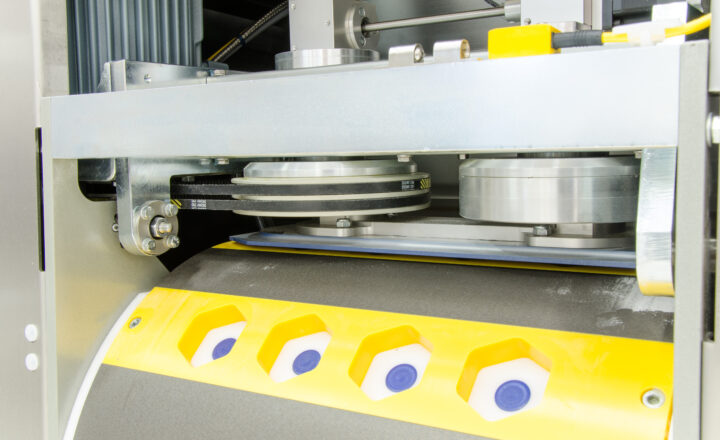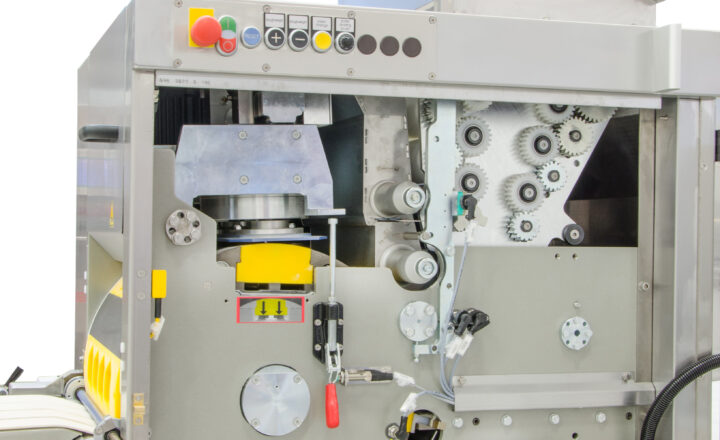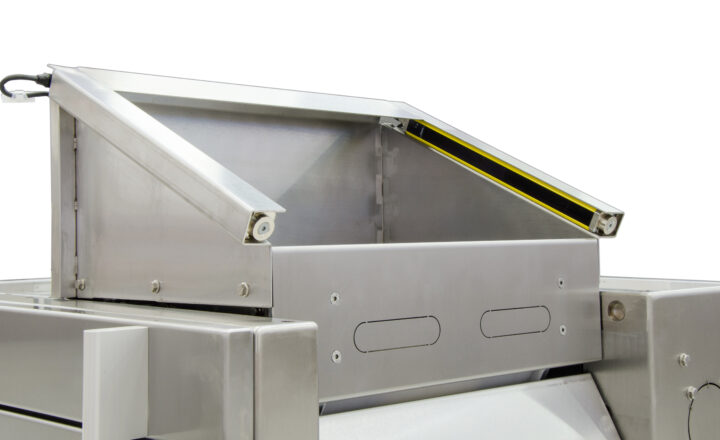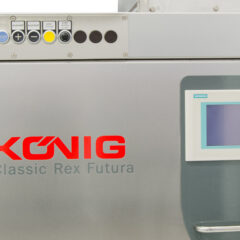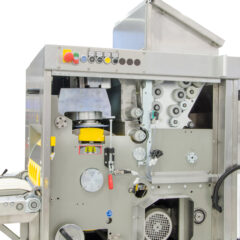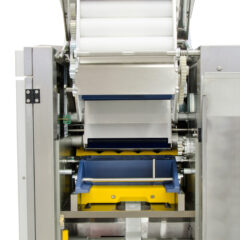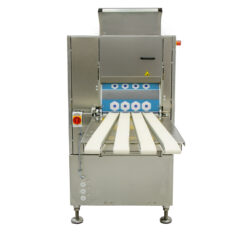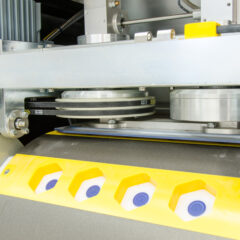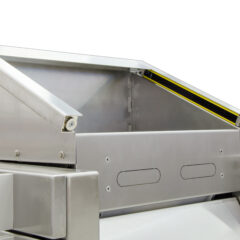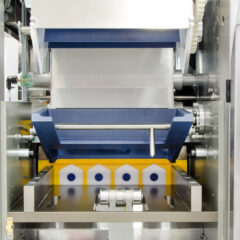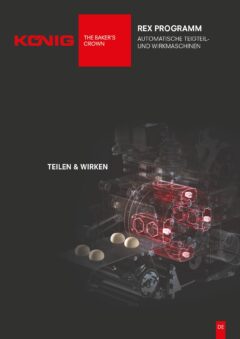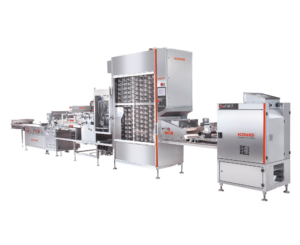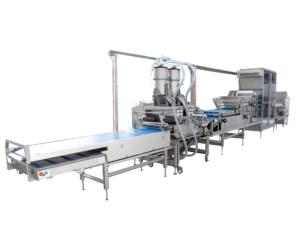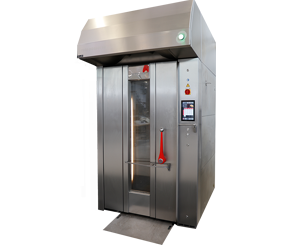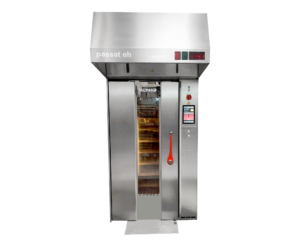- Maximum hourly output of up to 9,000 pieces per hour
- Three to six-row machine design
- Machine weight approx. 950 kg
- Fully automatic machine operation
- Ideal for the most stringent of hygiene requirements
- Extended weight range through the use of an enlarged weighing drum
- Simple dough feeding using a large shaft hopper
- Optionally with spreading belt or out-feed conveyor belt
- Simple addition and removal of rows
Classic Rex Futura
An enlarged drum, different sized drum ledges and different stamp sizes are the main features of the Classic Rex Futura. This allows the processing of a particularly high range of weights.
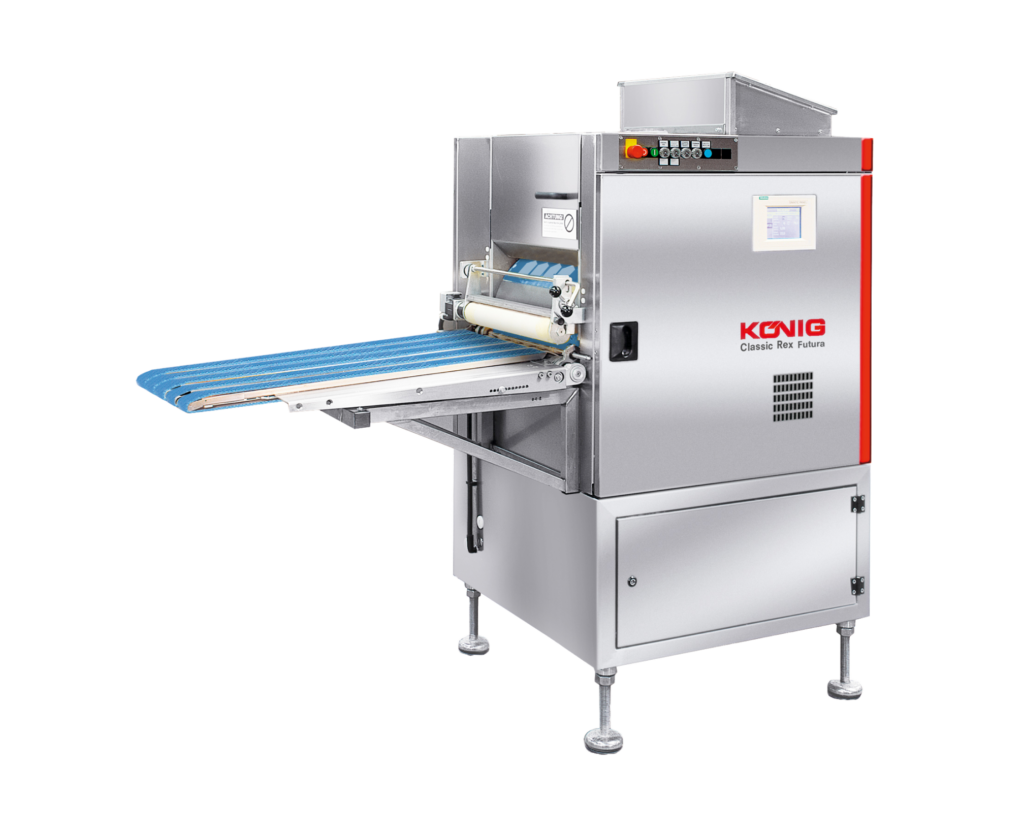
Overview
Technical details
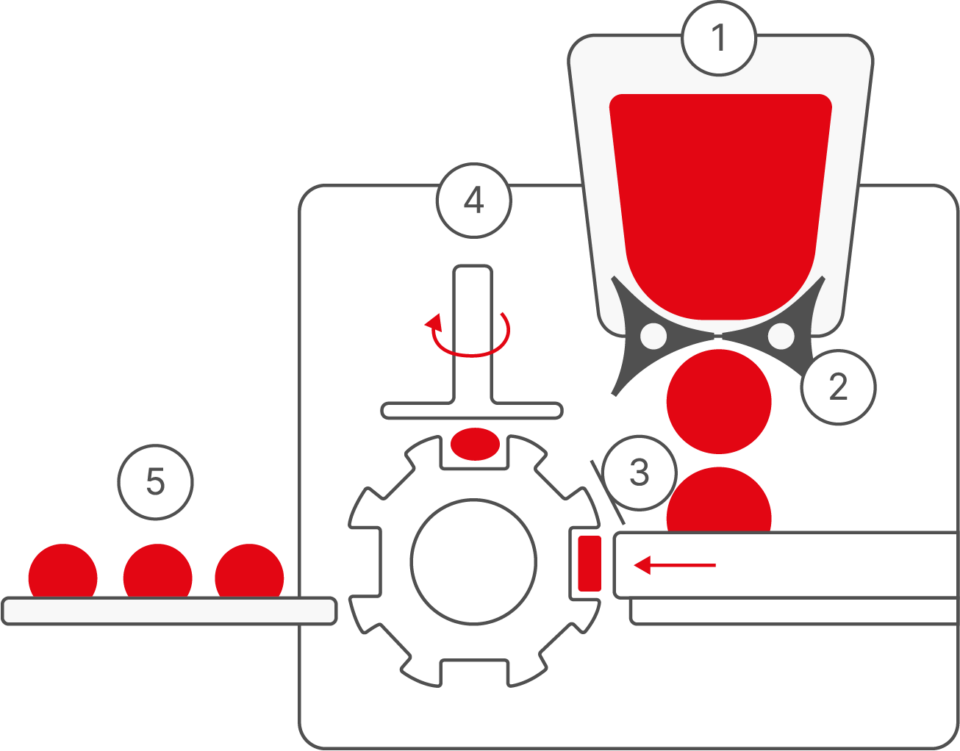
- The dough is put into the shaft hopper or the roller hopper (optional).
- Optimised dough portions are transferred to the weighing area (depending on the individual weight of the dough pieces) by means of rotating star rollers (dough feeding stars).
- The horizontally moving pusher presses the dough into the openings of the rotating weighing drum. The excess dough is transported back to the weighing area by means of a scraping ledge.
- After a 90° counter-clockwise rotation, the rounding of the dough is carried out with an oscillating rounding plate. Different rounding plates are used depending on the consistency and weight of the dough.
- After a further rotation of 90°, the dough pieces are placed onto the spreading belt.
Linked machines
No contents found
